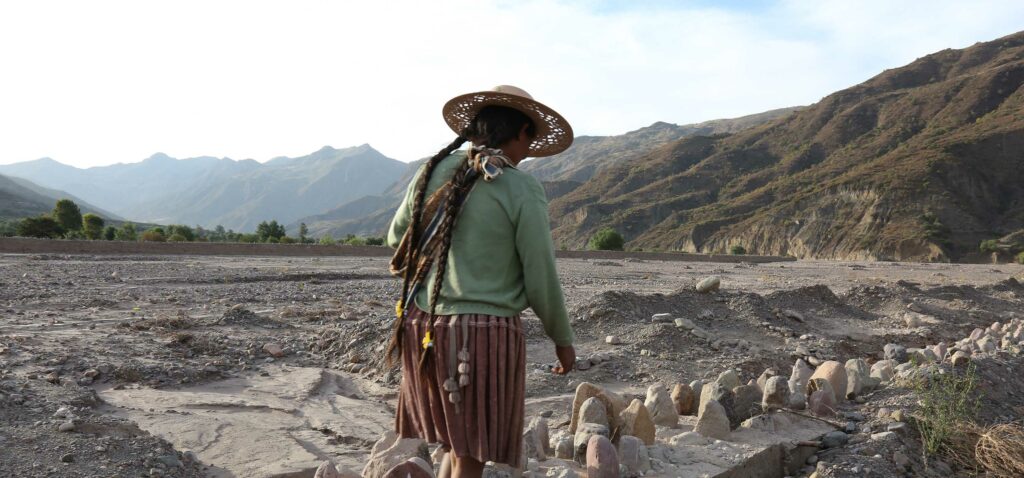Intelligent soil management can slash agricultural emissions
It is frequently claimed that the growing human population can not be fed without destroying the climate. This is a fallacy. Applying sustainable soil management techniques has the potential to reduce current agricultural emissions by a third
Climate

Is it possible to provide healthy and nutritious food for a growing global population with changing food habits, and at the same time protect our planet and reduce greenhouse gas (GHG) emissions?
The answer is yes: it is not only possible but urgently needed.
According to the FAO global soil organic carbon (GSOC) sequestration map, sustainably managed soils have the potential to offset as much as 34% of global agricultural GHG emissions annually, sequestering up to 0.56 petagrams of carbon – or 2.05 gigatons of CO2 equivalent.
Soil organic carbon is the carbon stored in soil organic matter. It is crucial to soil health, fertility, and food production – making its preservation and restoration essential for sustainable development.
Described as “more than just a map”, the GSOC map indicates potential carbon sequestration hotspots. These are areas where intensifying sustainable soil management practices will have a larger impact on GHG mitigation and help build the resilience of agriculture production systems, bringing us closer to potential offsetting targets, with plenty of co-benefits.
Latest reports show that due to unsustainable management practices, agri-food systems contribute to around one third of global GHG emissions, are a primary driver of biodiversity loss, and are responsible for up to 70% of freshwater withdrawals. Furthermore, 33% of agricultural land is degraded, with 25% being severely degraded. FAO’s findings reveal that improved sustainable soil management practices are part of the solution to the climate crisis, and at the same time promote biodiversity conservation, groundwater storage, ecosystem restoration, and better livelihoods.
At a moment when young people are demanding that economies urgently decarbonize and reach the ambitious goals of the Paris Agreement, these findings are timelier than ever.
A recent study on countries’ commitments to soil organic carbon in their nationally determined contributions (NDCs) revealed that, in spite of the important role of soils in climate change mitigation and adaptation, most countries do not reflect this in their climate-related planning. Even fewer consider the co-benefits of increasing soil organic carbon.
The Koronivia Joint Work on Agriculture, the program under the United Nations Framework Convention on Climate Change (UNFCCC) focusing on agriculture and food security, provides an opportunity to clearly recognize that healthy soils are a “no-regrets” option to address climate change (while providing multiple other benefits) which is ready to be deployed.
Wide-ranging benefits
Investing in healthy soils brings many benefits, including climate-related ones. It will increase productivity, healthier food production, water storage and biodiversity conservation, making agri-food systems more sustainable and resilient – and part of the solution to the climate crisis.
The key players are the farmers who can make a difference by adopting sustainable agricultural and soil management practices. However, farmers should not be the ones absorbing the costs and risks of the transition. They need technical support and financial incentives to engage in good practice. Policy and planning frameworks, then, must provide the enticements required for change at scale.
With the right policies and incentives in place, innovative agriculture and food systems can make a huge contribution to global challenges. But only if we also expand and accelerate action in other major areas.
We must reduce GHG emissions by:
- halting deforestation and degradation
- sustainably managing livestock
- sustainably managing and optimizing the use of manure and chemical fertilizers
- significantly reducing food loss and waste
We must sequester carbon through conservation, sustainable management, and enhancement of permanent vegetation (forests, rangelands) and soil health.
And we must strengthen agri-food systems through adaptation to climate change and building resilience to shocks and stress.
Few sectors in the economy offer better opportunities to combine cost-effective mitigation and adaptation measures than agri-food sectors, once sustainable practices are adopted. Increasing and capturing carbon in agricultural soils and continued sustainable soil management practices are effective ways of reducing GHG emissions from agriculture. Soils rich in carbon are healthier and more fertile, and therefore beneficial to farmers and to the environment.





